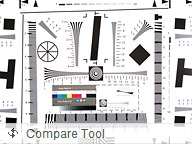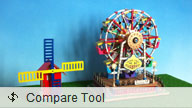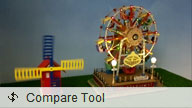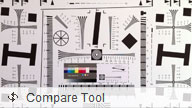HTC One S review: Onederful
Onederful
Shared camera interface
The HTC One S packs an 8MP camera that does stills of up to 3264x2448 pixels and records 1080p video @ 30fps. There's an LED flash / video light too.
The camera interface is the same for both the still camera and the video camera - no they don't "look alike", the camera just has the UI shared between both functions.
The right-hand side features the Effects button, shutter key, camcorder record key and a shortcut to the gallery that shows the last photo taken. On the left is the flash setting toggle, general settings and shot mode (we'll get back to that in a moment).
To snap a photo, you tap the shutter key. To record video you tap the button below - and you can still tap the shutter key to snap a full-res photo, even while recording video. Another cool option is the burst mode, which we mentioned in the gallery - you press and hold on the shutter key and it will snap multiple photos and let you pick which one to keep (you can keep all of them of course).
All this is pretty cool, but we had one problem with this combined interface - if you want full 8MP resolution still shots, you have to disable the Widescreen option. But then it becomes hard to frame a 16:9 video in the 4:3 view finder. That's made even worse when shooting 720p video. The field of view in that mode is narrower than what the viewfinder shows and framing involves a lot of guesswork.
The HTC One S has touch focus and face detection; geotagging and smile shutter are also enabled.
Continuous autofocus is available too which is good to have on a phone like the One S with no hardware shutter key (the virtual shutter key cannot trigger autofocus either, it does burst mode). On the downside, the continuous autofocus may be way off in some shots - the only way to be certain you have the right focus is to tap and hold the desired focus point on the screen.
The effects button brings out a panel to the left with the usual set of color effects (sepia, solarize and so on). There are other image effects too. For example, Depth of field is another such effect - it adds a radius slider around the control point and will blur everything in the photo that falls outside the circle.
The shot mode button offers some more cool stuff - HDR photos, Panorama (with a gyro horizon), portrait, group portrait, landscape, whiteboard, close-up and, finally, low light.
Group portrait is quite cool - we've seen something like it before in the Scalado Rewind. It snaps multiple photos and for each face (and the One S can track many faces), the phone automatically picks the one where that person is smiling and didn't blink.
HTC didn't take any chances with the camera this time - an f/2.0 aperture and a dedicated image processing chip clearly show they mean business.
And it has worked - the camera on the One S is a notable improvement over previous HTC cameraphones. The noise is kept low and the post processing leaves a lot of fine detail in the shot. There are some signs of oversharpening though. Colors are accurate but a touch oversaturated.
Overall, the camera may not be the big deal HTC makes it up to be, but it is certainly decent. We've got a bunch of samples below for you to check out.
The One S offers HDR mode, so we took a few shots with that too. Here's a comparison of a scene with HDR off and on. The results are not bad the HDR look is a bit exaggerated .




HDR off • HDR on • HDR off • HDR on
We also snapped a photo in a dark room to see how the HTC One S performs. The results are decent, even if a bit low on contrast.
Photo quality comparison
The HTC One S joins the other 8MP shooters in our Photo Compare Tool. The tool's page will give you enough info on how to use it and what to look for.
The first chart is simple and shows the One S is a good shooter, though we've seen 8MP cameras that do better. The second chart proved a big problem as most shots were out of focus, which showcased the disadvantages on relying only on continuous autofocus. Colors look okay save for the higher-than-it-should-be saturation. The third chart shows spot on color balance under artificial lighting and good details in a more realistic shot (that is, not a synthetic test).



HTC One S in our Photo Compare Tool
1080p video recording
The One S records 1080p or 720p videos at 30fps and it can snap photos while at it. You can also use touch focus and even toggle the video light - that's during recording!
Videos are stored in MP4 files and use H.264 encoding. 1080p videos have a somewhat low bitrate of about 10Mbps, but manage to retain very good levels of detail. The colors are saturated over the top though.
The framerate hovers around the 29fps mark when the lighting is good, but when the lights go out the camera drops well below the 24fps threshold, which results in choppy videos.
The One S camera boasts stereo audio recording with a sampling rate of 44kHz and bitrate of 128Kbps.
The 720p videos captured by the Once S are good. They only use half the bitrate (makes sense since 720p is about half as many pixels as 1080p). You should keep in mind their field of view is narrower than the 1080p videos.
Here goes an untouched sample 1080p@30fps video clip and a 720p@30fps clip.
And here's a video uploaded to YouTube for convenience. Don't forget to click 1080p on the FullHD video sample and open the video fullscreen.
The HTC One S also shoots slow-motion videos but the resolution drops significantly - you get 768x432 at 2.4Mbps bitrate. HTC didn't give an official number, but we measured it at a 3x slo-mo. Here's what these videos look like.
Video quality comparison
We entered the HTC One S in our Video Compare Tool database too and put it head to head with other 1080p mobile camcorders.
One S videos retain a very good level of detail, though they have a noticeable yellow tint under artificial light. Low light performance is very good. The third chart shows good video resolution, though not the best. The relatively low bitrate might be to blame here.
Reader comments
- Simon
- 08 Mar 2020
- 7AH
This was such an incredibly designed phone. I still feel like the One S and One X were the best-designed phones at their time ever. I don't wish we went back to the big bezels, but I do wish we got something as uniquely beautiful these days as well.
- AnonD-636492
- 22 Jan 2017
- 4A0
I enjoyed the feel of HTC sense running on HTC one S but HTC ended support updates very fast. The phone itself gets extremely hot easily and often lags and the screen quality could be a lot better
- AnonD-266796
- 24 May 2014
- i$M
Need are solution















